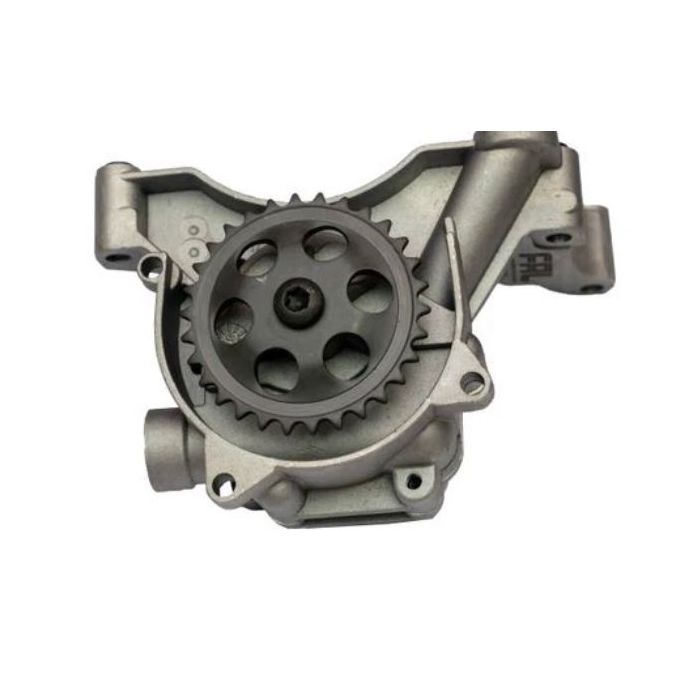Optimize fuel efficiency with a top-tier clp engine.
Optimize fuel efficiency with a top-tier clp engine.
Blog Article
Just How a Clp Engine Can Improve Performance in Various Industries
The arrival of CLP engines marks a considerable shift in functional performance across numerous fields, driven by their ability to maximize fuel consumption and decrease downtime. Industries such as production and logistics stand to obtain substantially from their durable layout and consistent power result, which promise to enhance procedures and improve productivity. As organizations significantly prioritize sustainability along with performance, the function of CLP engines comes to be even more crucial. What continues to be to be seen is just how these improvements will shape the future landscape of industrial operations and their effect on wider financial trends (clp engine).
Overview of CLP Engines
CLP engines, or Continuous Liquid Propellant engines, stand for a considerable development in propulsion innovation, specifically for room applications. These engines use a continual feed system that allows for the sustained expulsion of propellant, causing enhanced performance and performance compared to standard strong or hybrid propulsion systems. By keeping a consistent circulation of liquid propellant, CLP engines can accomplish a lot more exact thrust control, which is important for navigating spacecraft in various mission scenarios.
The style of CLP engines incorporates innovative materials and innovative fuel monitoring systems. clp engine. This results in lowered weight and enhanced reliability, essential elements for long-duration room missions. The continual procedure lessens the threat of combustion instability, a typical obstacle in traditional rocket engines.

Advantages in Production
The production of Constant Fluid Propellant (CLP) engines offers several remarkable advantages that improve both efficiency and cost-effectiveness. One of the main benefits is the streamlined production procedure, which reduces the intricacy connected with standard propulsion systems. By using fluid propellant, makers can accomplish greater precision in engine efficiency, leading to enhanced power result and reduced waste.
Additionally, CLP engines promote a greater degree of modularity, permitting much easier assimilation right into different production lines. This flexibility can dramatically reduce preparations and enhance overall functional adaptability. Making use of CLP technology likewise often tends to decrease the demand for considerable maintenance as a result of less moving parts, which translates into lowered downtime and functional prices.

Applications in Logistics
Leveraging Continuous Liquid Propellant (CLP) engines in logistics supplies substantial benefits in operational effectiveness and reliability. These engines supply a durable solution for various transport requirements, making it possible for the smooth motion of items across substantial distances. The fundamental layout of CLP engines permits constant power output, which translates into smoother and much more predictable transport routines.
One of the crucial applications of CLP engines in logistics remains in durable freight transport, where they can drive both ground and airborne cars. Their ability to keep high efficiency under varying tons problems ensures that delivery timelines are met, thus enhancing client fulfillment. Additionally, CLP engines can be incorporated into automated logistics systems, facilitating real-time tracking and optimizing course planning.
Moreover, the resilience of CLP engines reduces maintenance downtime, enabling logistics companies to optimize their functional abilities. This is specifically helpful in warehousing operations, where performance in taking care of and moving goods is critical. As logistics proceeds to develop, the assimilation of CLP engines stands for a forward-thinking technique that not only improves efficiency but also sustains the market's growing demands for dependability and speed.
Influence on Power Effectiveness
Just How do Continuous Liquid Propellant (CLP) engines improve energy effectiveness in transportation? CLP engines use a constant flow of fluid fuel, optimizing burning procedures and maintaining a stable thrust output. This design reduces energy losses connected with typical burning engines, where gas distribution can differ and result in inefficiencies.
The continual procedure of CLP engines enables a much more efficient thermal cycle, causing greater certain impulse contrasted to standard engines. clp engine. This equates to minimized fuel intake for the very same quantity of work done, substantially lowering functional prices throughout numerous transportation industries, including aviation and maritime industries
Furthermore, the capability of CLP engines to maintain optimal performance under differing lots problems minimizes the requirement for frequent acceleration company website and slowdown, better enhancing gas effectiveness. Improved energy effectiveness not only contributes to cost savings yet additionally leads to decrease greenhouse gas exhausts, aligning with international sustainability goals.
Future Trends and Innovations
Emerging advancements in Continual Liquid Propellant (CLP) engine modern technology promise to reinvent the landscape of transport performance and sustainability. As sectors pivot towards greener alternatives, CLP engines stand at the center, integrating innovative products and layout techniques that boost performance while lessening ecological effect.
One of one of the most promising trends is the fostering of hybrid systems that integrate CLP engines with renewable resource resources. This harmony can optimize fuel intake and lower emissions, aligning with global sustainability goals. Furthermore, advancements in computational fluid dynamics (CFD) are facilitating the design of more aerodynamically reliable engines, bring about decreased drag and boosted gas performance.
In addition, the growth of smart surveillance systems is established to enhance functional performances. These systems leverage data analytics and IoT modern technology to maximize engine performance in real-time, making certain that the engines run within their most efficient criteria.
As research remains to explore alternative propellant formulas-- such as biofuels and artificial gas-- the future of CLP engines looks appealing. By harnessing these developments, markets can not just improve their performance however also add dramatically to a cleaner, much more lasting future in transportation.
Final Thought
To conclude, CLP engines represent a significant innovation in performance across multiple markets. Their capability to maximize gas usage and decrease functional costs, combined with a continual feed system, improves power outcome and operational integrity. The integration of advanced products and fewer moving components decreases maintenance demands, while placement with sustainability objectives positions CLP engines as a pivotal modern technology for the future. Proceeded advancement in this area guarantees further improvements in effectiveness and ecological performance.
Report this page